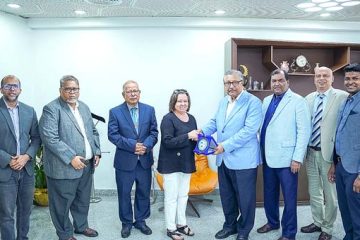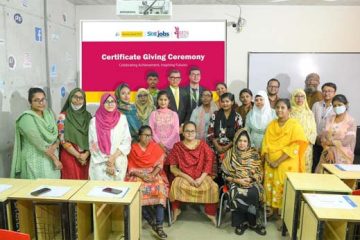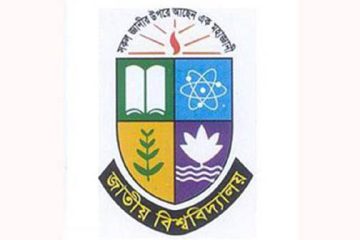The Aila-affected poor people in Koyra upazila of the district still have little access to sanitation facilities. The entire coastal region of the country was submerged under saline water following the onslaught of cyclone Aila on May 25 in 2009. The super cyclone destroyed sources of drinking water including ponds, tube-wells and household latrines, leaving over 3,00,000 people without access to these basic services in Khulna, Satkhira and Bagerhat districts. The scale of impact was unprecedented and four years later, many communities still have inadequate access. In an unofficial census reveled that only fifty per cent population in the coastal area use latrine and out of them only twenty per cent have sanitary latrines and others use unhygienic ones. Considering the sufferings of the poor community people a Khulna based non-government organisation, Rupantar in association with WaterAid, Bangladesh is implementing a project in Aila-hit Koyra upazila of Khulna district to gain access to water and sanitation services, as well as building their capacity in hygiene practice and climate change adaptation.
Sharoda Biswas, general secretary of mothers’ club of Koyra Sadar Union parishad said, “Identifying that a major barrier of communities they established Ward Disaster Management Committees (WDMC). Each committee was comprised of around 20-25 people from a ward, so there is representation of the all community stakeholders including Union Parishad members, teachers, religious leaders, volunteers, respected elders, professional and members of different informal community groups.”
Adapting Wash for Climate Change (AWaSH) project coordinator of Rupantar, Rabeya Basri said that they suggested some sustainable strategies including creating effective demand through health education and hygiene promotion, creating family and community awareness, activating local government to play key role for improving and spreading sanitation facilities, reaching sanitation system to the hardcore poor as well as media campaign to improve the sanitation situation.
Civil Surgeon of Khulna Dr Golam Mortuza Shikder said that extreme poverty, natural disaster, lack of awareness, undeveloped communication, shortage of sanitation equipment and tidal flows were found as the obstacles to improving sanitation situation.
Civil Surgeon Dr Mortuza also said that risk of diarrhoeal infection can be reduced up to 25 per cent through supplying pure drinking water, hygienic sanitation system can reduce the risk up to 32 per cent and proper health education, hand washing habit and necessary nursing can reduce it up to 45 per cent.
Executive Engineer of Department of Public Health Engineering (DPHE), Khulna Md Abdul Mannan said that different geographical conditions responsible for not achieving cent per cent sanitation coverage across the country. “At times, sanitation system collapses due to various geographical problems and natural disasters,” he added.
Engineer Mannan also termed ‘shocking’ the sanitation arrangement for the women living in the slums, chars, flood-prone and coastal areas, saying the women often become victims of rape during natural disasters in the coastal areas. He, however, said the government is pledged-bound to ensure sanitation for all by 2013.
-With The Independent input




















